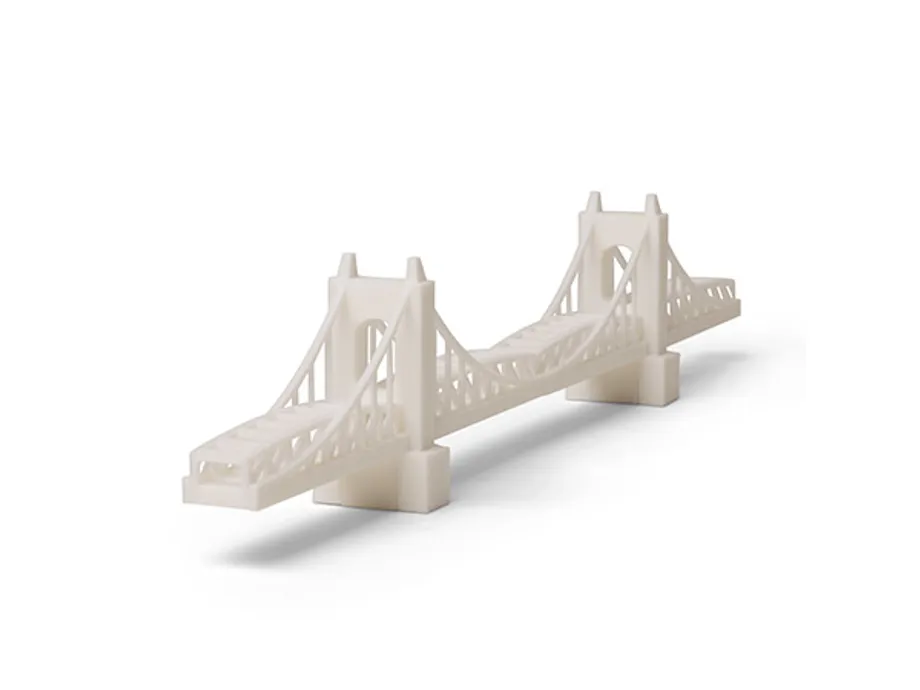Suspension bridge
A suspension bridge is a type of bridge in which the deck (the load-bearing portion) is hung below suspension cables on vertical suspenders. The first modern examples of this type of bridge were built in the early 19th century.
Simple suspension bridges, which lack vertical suspenders, have a long history in many mountainous parts of the world. A suspension bridge has cables suspended between towers, plus vertical suspender cables that carry the weight of the deck below, upon which the traffic crosses.
This arrangement allows the deck to be level or to arc upward for additional clearance.
3D print of a suspension bridge
This is a 3D print of a suspension bridge. The first permanent wire cable suspension bridge was Guillaume Henri Dufours Saint Antoine Bridge in Geneva, Switzerland, built in 1823 with two 40m spans.
The first with cable assembled in mid-air in the modern method was Joseph Chaley's Grand Pont Suspendu in Fribourg, Switzerland, built in 1834 with a span of 373m.
Donated by Denford

